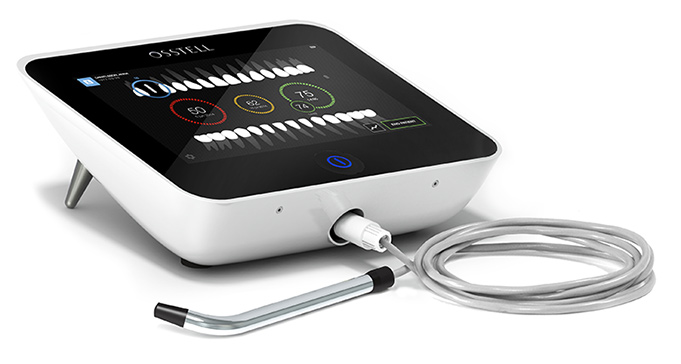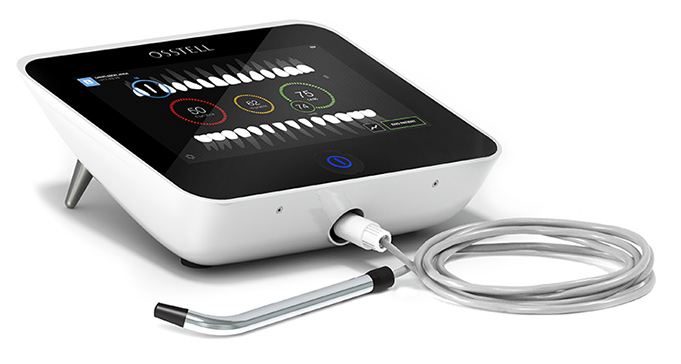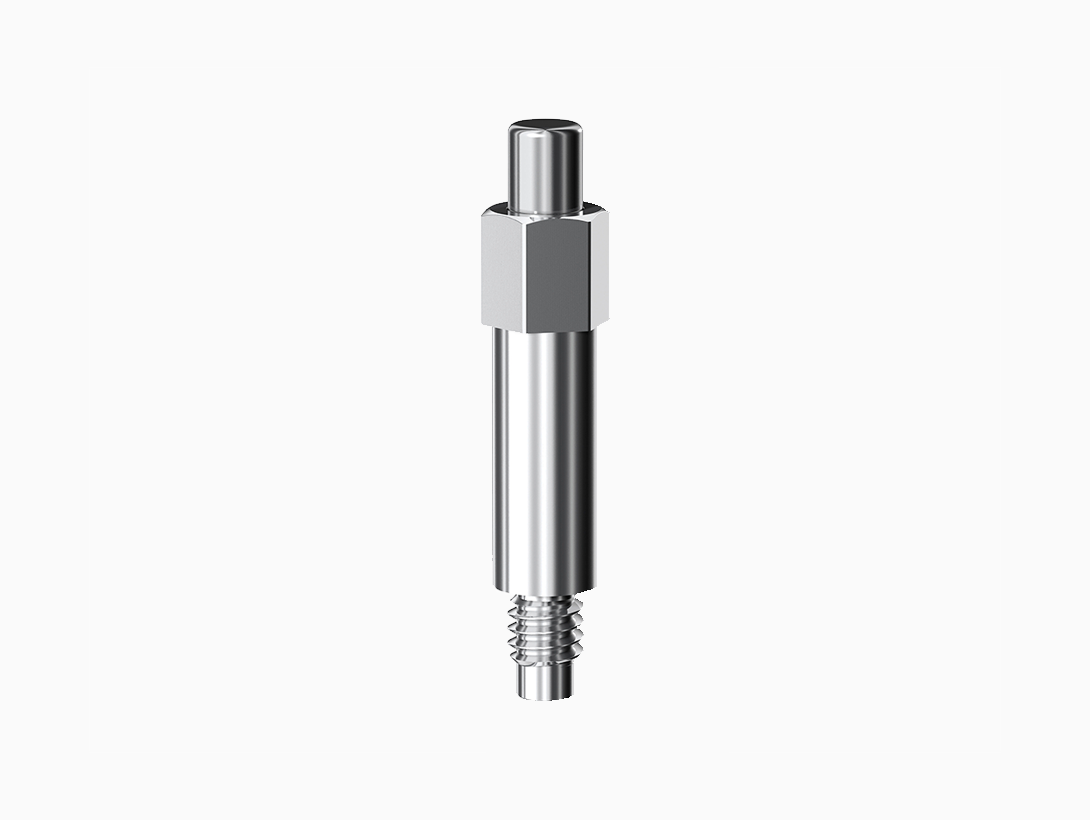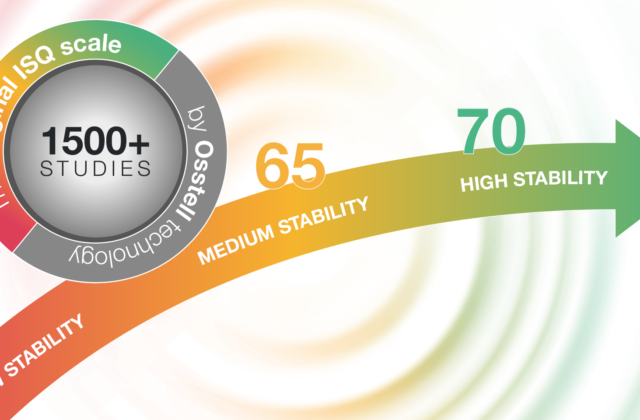
Osstell Presents New Platform For Objective Implant Stability Assessment
Mar 16, 2015
Press release: Gothenburg (Sweden), March 10, 2015: Osstell, the company that developed the ISQ technology, is today launching the Osstell IDx.Osstell, the company that developed the ISQ technology, is today launching the Osstell IDx – a completely new and improved platform with a novel, intuitive user interface and functional design. The Osstell IDx is combined with the new Osstell Connect – a set of online services for automatic ISQ data storage, sharing and analysis of implant stability data.
Osstell now takes the next leap in the evolution of implant diagnostics with the introduction of Osstell IDx. It displays the ISQ measurements in an intuitive and easily interpreted way. It is easier than ever to assess implant stability and the degree of osseointegration, ensuring that implants are stable enough for final restoration. It also facilitates the communication with patients, or the restorative dentists, concerning the treatment plans.
Professor Peter Moy, UCLA, (US) states: “Osstell has become my personal guide in determining the appropriate time to load patients’ implants, and I now use it for every implant case.”
Furthermore, with the Osstell IDx the company also introduces the associated online service Osstell Connect. Implant stability data and results are automatically stored directly in the device and in the Osstell Connect service. It makes collaborations with colleagues easier, enables data backup, remote service and support, and allows the user to analyze implant and treatment data through various platforms.
“We have listened to our users, who need advanced technology in the form of an easy-to-use and intuitive complete product concept that also protects their data in the best possible way. With this in mind, we developed the Osstell IDx and the Osstell Connect service”, says Jonas Ehinger, CEO of Osstell.
The increasing need to objectively evaluate implant stability and osseointegration cannot be done by using traditional methods such as torque and percussion tests. The Osstell technology is the only objective, non-invasive method available to achieve this.
“In daily practice, we never measure the insertion torque since we use Osstell instead to monitor implant stability. For non-splinted implants, we want the second ISQ value to be ≥70 to initiate the prosthetic rehabilitation with functional loading. In most implant patients, this is either at 4 or 8 weeks of healing allowing an early loading protocol”, Professor Daniel Buser, from University of Bern (Switzerland) states.
The Osstell IDx will be launched at the IDS event in Cologne, Germany, on March 10th and at the Academy of Osseointegration’s Annual meeting in San Francisco, USA, on March 12. Initially, it will be available in the US and selected European markets. Additional markets will follow pending registration processes.



